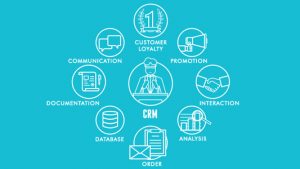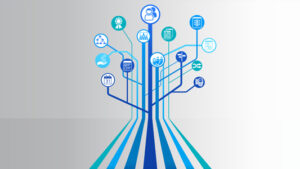Cover Story

A famous quote by the British science fiction writer goes Arthur Clarke goes “Any sufficiently advanced technology is indistinguishable from magic.” Such “magic” in some form of technology within artificial intelligence has been envisaged for over 30 years now. In 1965, Dr Herbert Simon, one of the founders of AI said “Machines will be capable in 20 years of doing any work a man can do.” However, these technologies have seen immense momentum only recently, given that only in the last five to eight years we have seen immense possibilities to run algorithms on really large data sets. Technologies like IBM Watson, Google’s driverless cars, Siri from Apple are all great examples of Machine Learning in action, while with AI, the intelligence on top of data, can be applied across several use cases to interpret and take decisions on big data. This could potentially be very powerful for enterprises not only to run processes far more effectively, but also importantly, make really quick decisions based on accurate insights from very large data sets and complex processes. By filtering out irrelevant or unwanted information from large data sets, only the most relevant information is now available for decision making.
The value of AI to enterprises cannot be under estimated. Chatbots, predictive intelligence, fully automating repetitive processes and robot PA’s are fast becoming reality in enterprises. Bots will be capable of holding conversations in customer service to answer customer queries, and resolve all service issues in a quick and accurate manner. These bots will further also predict customer preferences and use that intelligence to either cross and upsell as well as resolve queries and issues. Decisions will be taken in a far more intelligent manner, thanks to more accurate insights received on virtually any data set within and outside the enterprise, thereby ensuring significant improvement in enterprise performance. This will have huge implications across a wide range of industries from healthcare, transport, logistics, customer service, banking & insurance to manufacturing in the form of performance improvement. Enterprises will see a significant shift in terms of the sheer cycle time to run their business, deal with customers and turnaround processes in unprecedented time.
The impact that all this will have on jobs and the way the workforce of the future will look like, has been widely debated. Newer type of jobs will be created in most industries as labor intensive and manual work will be outsourced to the robot. While some experts have envisioned that robots will displace a lot of blue and white collared workers and cause increase in unemployment rate, an equal amount of experts argue that AI will create a completely newer type of workforce of the future away from just manual data entry to one that entails making use of higher levels of skills. Data scientists, business architects and quantitative analysts are some examples of people with these new skills. Also, this will gradually cause a realignment of the society’s relationship with employment as more people shift their focus to self-improvement and build better relationships with loved ones. How our educational system will accelerate its preparation for this reality will be interesting to be seen.
AI in Enterprises – some use cases
- Recognizing and preventing cyber-attacks and all kinds of frauds.
- Identify vulnerabilities in data and security.
- Automated data driven reporting.
- Significantly improving customer service.
- Understanding and predicting customer behavior and customizing engagement with each customer.
- Decision support. Correlations in data to make smarter decisions.
- Virtual personal assistants.
- Automate all manual and repetitive tasks.
- Monitoring and alerts on the health of the business.
- Filtering out social media feeds to respond to the most relevant and important ones.
- Analytics driven applications.
While some experts have envisioned that robots will displace a lot of blue and white collared workers and cause increase in unemployment rate, an equal amount of experts argue that AI will create a completely newer type of workforce of the future away from just manual data entry to one that entails making use of higher levels of skills. Data scientists, business architects and quantitative analysts are some examples of people with these new skills. Also, this will gradually cause a realignment of the society’s relationship with employment as more people shift their focus to self-improvement and build better relationships with loved ones. How our educational system will accelerate its preparation for this reality will be interesting to be seen.
How will enterprises adopt AI and who in the enterprise is in the best position to take charge of AI? This is certainly not a plain IT or any single group agenda. The line of business will need to take the lead to identify the best possible use cases in line with their own goals and objectives. Given that AI is a complex and large set of solutions, they would need to work with IT and subject matter experts to determine which of these solutions are most relevant for them and design a roadmap. While some cognitive technologies can just be extensions of predictive analytics, some could be very complex like neural or deep learning networks, natural language processing and algorithms. Several new applications have inbuilt cognitive feature into their solutions. Taking a big bang approach could be a bit overwhelming. Identifying low hanging fruits and beginning with small projects would be a good starting point.
Examples of AI in Action
- Ford motors uses AI to schedule new hires through a three year training program
- Google’s use of AI into its core search technology for much better retrieval
- Xerox’s PARC lab uses AI to detect fraud and abuse in health data
- MD Anderson Cancer Centre uses cognitive in many different ways including solutions to eradicate cancer
- Online recommendation offers like those from Amazon and Netflix using Machine Learning
- Cross-sell and upsell – Email segmenting and personal outreach
- Chatbots
- Flight search with Kayak- conversational UI
- Accurately predict the outcome of court cases
- AI entering the era of narrative – Associated Press earnings reports with AI
Once success is seen in the first few projects, it would be relatively easier to expand the scope or take on larger requirements. Again, several enterprises have seen success with a combination of build and buy approaches. There’s a lot of start-up activity with several new innovations offering a variety of options to accelerate the cycle time of processes, performance and decision making. In addition, several existing applications have embedded cognitive into their solutions to enable smarter processes for enterprises. This makes it easier for enterprises to leverage their existing investments to easily add cognitive features. It’ll not be before long that all applications come default with in-built cognitive features.
Relatively simple builds would include chatbots that make use of Natural Language technologies to manage customer queries or interact over mobile. Leveraging machine learning for data mining and analysis on large data sets could be either extension of an enterprise’s analytical capabilities or may require investment in building skills and capabilities both internally as well as hiring experts from outside. Adoption of open source software will be useful for enterprises who have a long term approach to investment in cognitive as building skills on these solutions is both time consuming as well as expensive.
Although manifestations of AI will be innumerable and difficult to completely imagine at the moment, it is quite certain that AI will shape the future of enterprises and workforce of the future. By starting soon and thinking small and big ways about how AI can be deployed, not only will enterprises fuel innovation but also unpack the true value of their people, as people invest their time in areas that will add maximum value to the organization.














